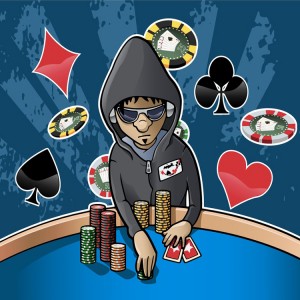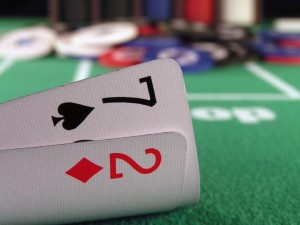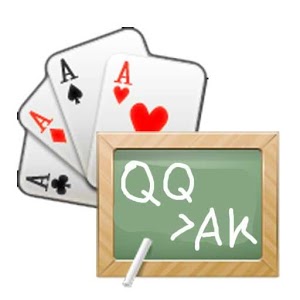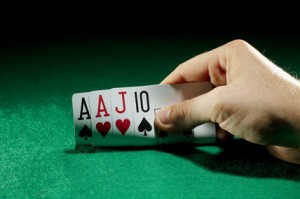A strategy analysis
Here are a few hands from the regular $1-$2 blinds, $5 bring-in, $500 max buy-in pot-limit Omaha game that a few locals and I started recently at The Venetian in Las Vegas. I’ll write a little more about the game in a coming issue.
Hand No. 1: Three-Bet Preflop, Delayed Double-Barrel Bluff on a Paired Board
My position: Hijack seat
My hand: 10 8
8



























Preflop: A middle-position player ($500) opens with a raise to $10. I ($700) reraise to $25. It is folded to the big blind ($600), who calls. The middle-position player calls.
This is a light three-bet that’s made to isolate the preflop raiser. It didn’t work.
Flop ($76): 9




























This is not a great spot for a continuation-bet (c-bet), as it is too easy for one of my opponents to have a 9 in his hand. Moreover, I do have a gutshot-straight draw.
Turn ($76): 5









The 5









Action: I bet $50. The big blind calls. The middle-position player folds.
This is interesting, as I am now clearly beat, likely by either an overpair or trips. What is less clear is whether or not I should fire another bet on the river if he checks.
River ($176): A






Now, this might be a great card. Obviously, having missed the straight, I cannot win by checking. But so far, my play has been consistent with holding A-A-X-X: It is entirely plausible that I would three-bet preflop with A-A-X-X, check aces up on the flop for pot-control purposes, then bet the turn. That said, if I bet again here, representing A-A-X-X for the overfull, I may be able to bluff my opponent off a pair (like K-K-X-X or Q-Q-X-X), or even trips.
Action: I bet $150. My opponent folds, flashing a 5 for trip fives.
Hand No. 2: Picking Off a Bluff by Check-Calling
My position: Under the gun
My hand: A


































Preflop: I ($500) limp in. It is folded to the button ($500), who calls. The small blind folds. The big blind ($500) calls.
This is a marginal call from under the gun. Generally, I’d prefer to have a suited ace when playing out of position, but I am pretty comfortable in this game.
Flop ($16): J

































I have top pair with a flush draw and should bet this hand, with only the button left to act behind me.
Action: I bet $15, and only the button calls.
Turn ($46): A











I now have a flush, albeit a non-nut one. I also have the top two pair for a full-house draw. That said, the debate here is between leading out and check-calling, and the decision is largely in favor of check-calling any bet, for a number of reasons.
The first is that if my opponent was on a draw, he was on a straight and/or flush draw. The problem with betting is that my opponent will likely fold if he was on the straight draw, whereas he might bet if I check to him; moreover, if he was on a flush draw, it likely beats me. In addition, in the event that my opponent actually did make a bigger flush and I am behind, I do not want to bet out and then get raised off my full-house draw. Meanwhile, the A











The percentage play here is to check-call any bet and give my opponent a chance to bluff when he’s behind. If I do not improve on the river, the play again will be to check, at which point I will have to use my judgment to decide whether or not to call a bet.
Action: I check. My opponent bets $45. I call.
Things go as planned.
River ($136): 7



Hand No. 3: Delayed Dry-Ace Bluff
My position: Button
My hand: A



































Preflop: The under-the-gun player opens with a raise to $10. Two players call behind him. I ($500) call. The small blind folds. The big blind calls.
This is a pretty marginal call, but I do have the button.
Flop ($51): J





























I have the dry ace.
Action: It is checked to the player in front of me ($450), who bets $35. I call, and everybody else folds.
I thought I’d try something different. My guess is that the bettor has either a non-nut flush or air. Either way, I expect to win the hand. If the board pairs, I can represent having flopped a set; if it doesn’t, I can represent having slow-played the nut flush.
Turn ($121): 3






I think he almost certainly has a flush.
River ($321): 9









There is only one play here, and that is to bet.
Action: I bet $200, and my opponent folds.
Submit your review | |








